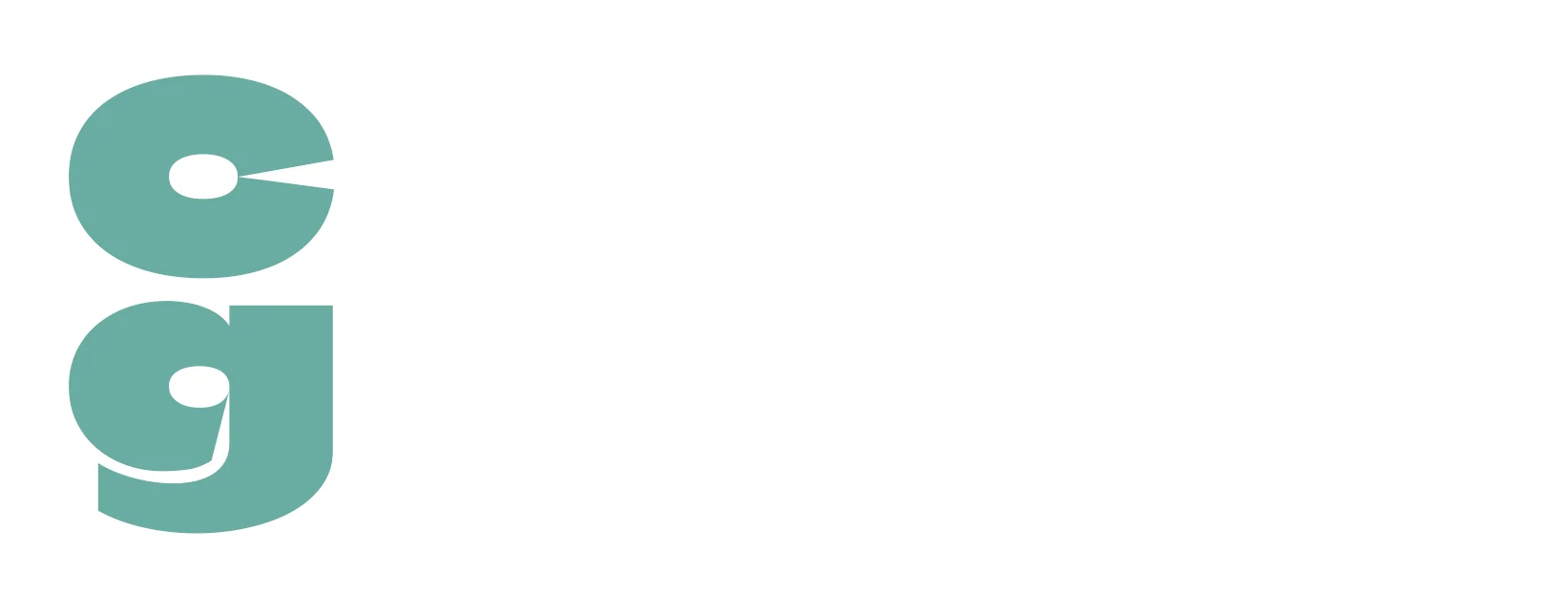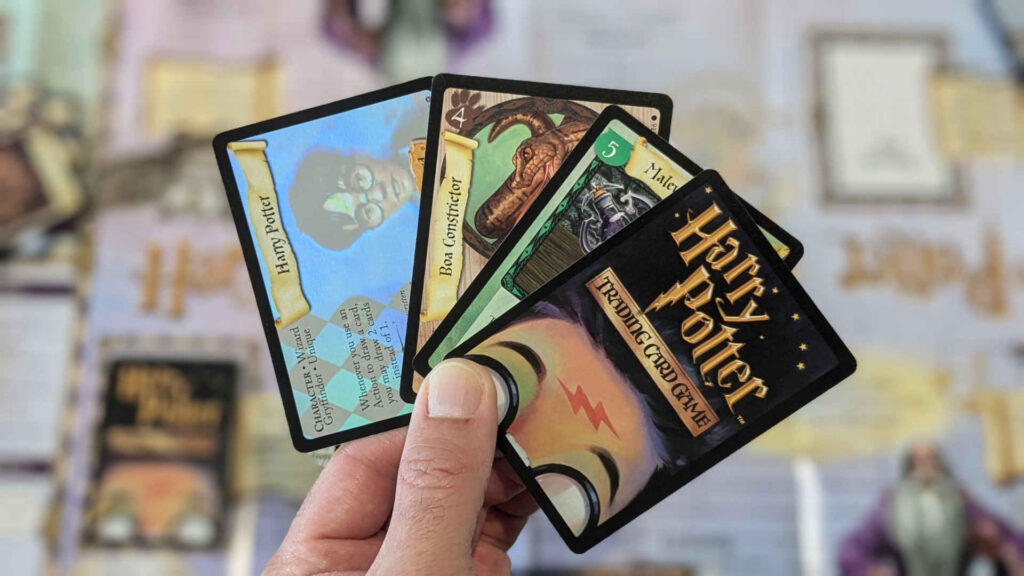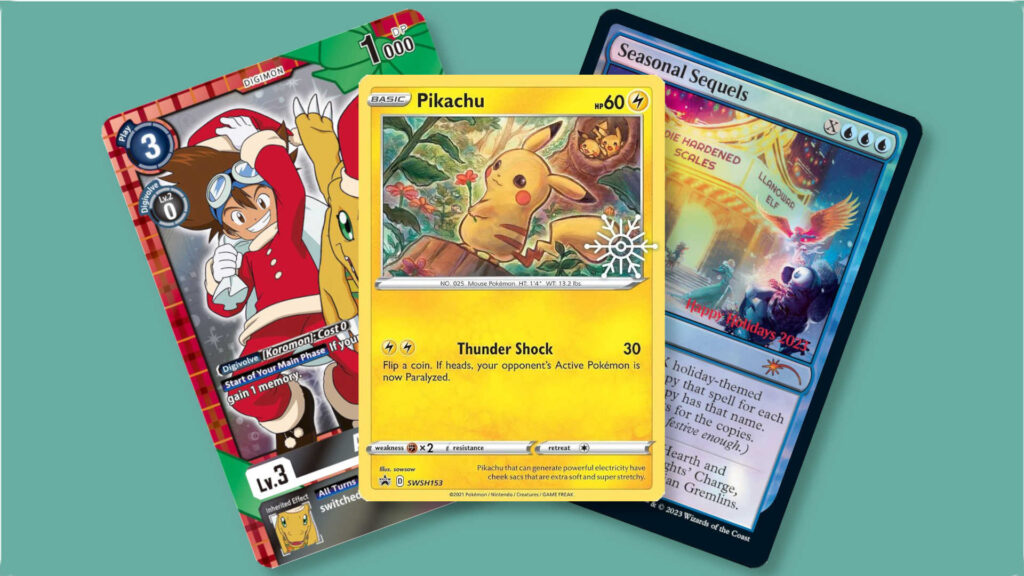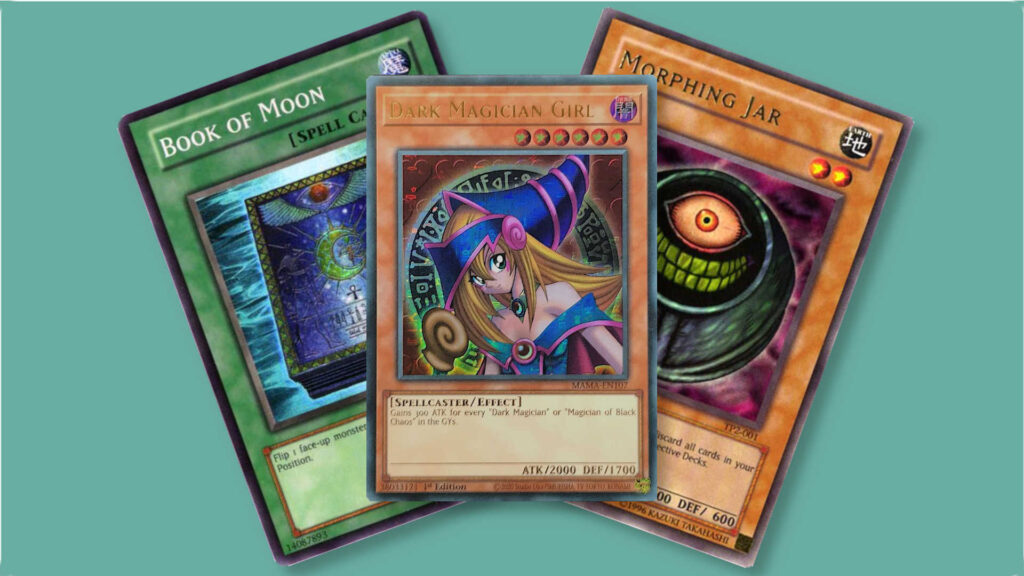The last few years has seen a massive surge of interest in trading card games (TCGs), with the decades-long dominance of the big three games in the sector, Magic: The Gathering, Pokemon and Yu-GI-Oh, being challenged for popularity and attention by upstarts such as Disney Lorcana and Star Wars Unlimited, while slightly less prominent games, such as the One Piece Card Game, Digimon, UniVersus and Achroma (which isn’t strictly a TCG) all carve out their own niches, with their own dedicated playerbases.
What this has shown is that there’s definitely room for more than just the big three games, and quite often there’s cross-pollination between games too, with fans no longer necessarily sticking to just one game, but dabbling in another title alongside their main TCG of choice.
It’s not difficult to imagine that a TCG based on the enormously popular Harry Potter universe would thrive in the current market. Despite the often controversial statements and views that have recently been espoused by the creator of the series, JK Rowling, the Harry Potter franchise has seemed to be largely immune, from a commercial point of view. Video game Hogwarts Legacy, for example, was a huge critical and commercial success despite the aforementioned controversies.
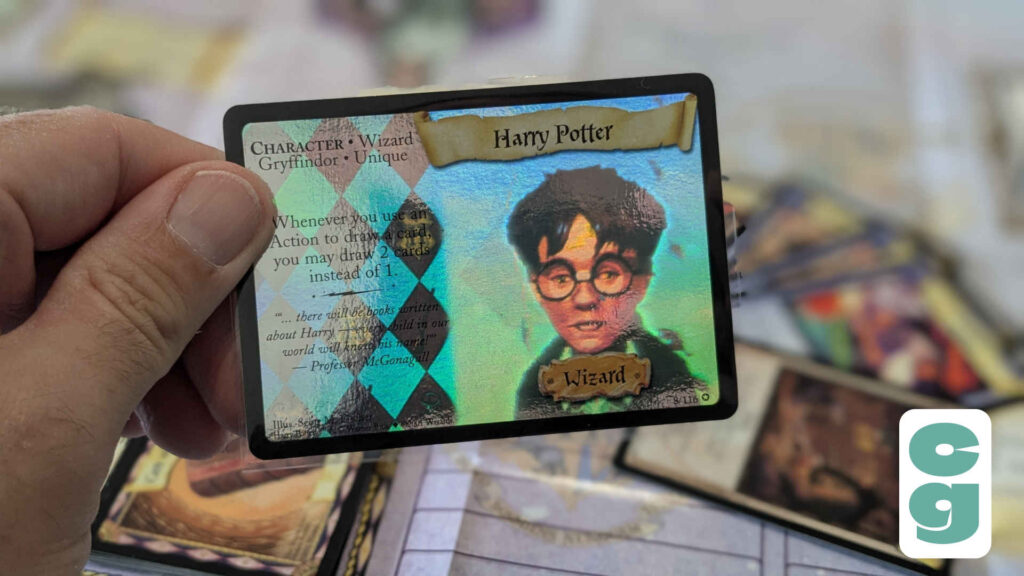
Could a Harry Potter Trading Card Game work, then? Well, here’s something you may not be aware of: not only could a Harry Potter TCG work, but it already did, way back in 2001. Released when Harry Potter fever was arguably at its peak, around the time that the movie adaptation of the first book was hitting the big screen, Magic: The Gathering publishers Wizards of the Coast (how apt, right?) developed and released a Harry Potter Trading Card Game, and it went on to be the second best selling card game in the US in the year it launched, according to an SF Gate article from December of 2001.
Given that popularity, you would perhaps expect the Harry Potter Trading Card Game to still be in print to this day, but it lasted for just over a year before being discontinued, with only four expansions released after the base set launched in August 2001.
So what happened to it? Was it any good? Let’s find out, as we rotate our time turner and take a trip back to Hogwarts, with a close look at the Harry Potter Trading Card Game.
Table of Contents
ToggleGetting Started With The Harry Potter Trading Card Game
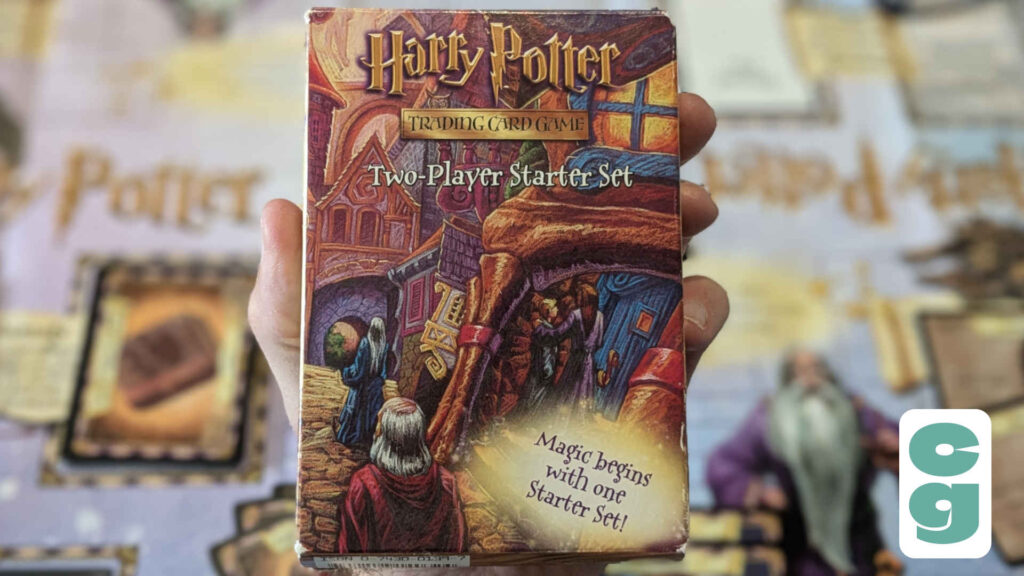
Even now, it’s very easy to get started with the game; it’s pretty straightforward and relatively inexpensive to buy Starter Decks for the Harry Potter TCG, though sealed decks might set you back quite a bit more than previously opened products, and the starter decks for some expansions will cost more than others.
The Harry Potter TCG Base Set Starter Set
The best thing about the Starter Set is that it contains two basic decks; you’ll only have to shell out for one of these to have enough cards for two players to learn and play the game. Though they’re not full, 60 card decks (each is a 40 card deck, plus 1 Witch or Wizard character; for example, the base set’s Starter Set is Draco Malfoy vs Hermione Granger), and not all card types are represented, it provides a representation of the full game that’s enough to initially play with.
The Starter Sets have a tremendously useful and comprehensive play mat included too, which is one of the very best beginner play aids we’ve ever seen for a Trading Card Game; it does an incredible job of summarising set up, important rules, the turn structure and the layout of each side. Even better, it has all of this on a mat which repeats this information to ensure that it’s facing each player on their side of the table, in a way that’s readable and makes learning the Harry Potter Trading Card Game incredibly easy.
It’s rare that you can pick up and play a TCG without glancing at the rule book, but Wizards of the Coast truly cracked this for the Harry Potter TCG, and it’s one of the rare games that can be played out of the box immediately, with just the decks given to each player and the play mat laid out in front of them. Admittedly, these don’t cover every card type, but they cover what’s in the Starter Set, and that’s enough to get players up and running immediately.
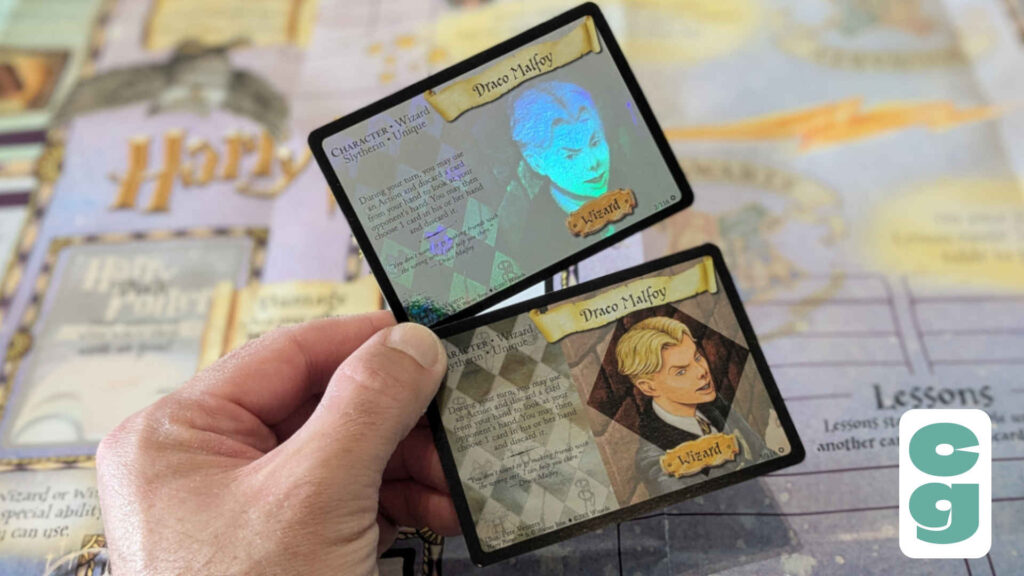
Might players have been disappointed that Harry Potter himself wasn’t included in the Starter Set? Perhaps, but Draco Malfoy and Hermione Granger are hardly obscure characters, and after all, Wizards of the Coast did need to coax players into buying booster packs, right? Of course, cards are featured at different rarity levels, as you’d expect; a circle next to the card number is a common card, a diamond is uncommon and a star is rare. Finally, star in a circle would seem to be a Starter Set exclusive version of a card. Along with 3D holographic witch and wizard Character cards (more on those in a bit!), there’s also some really spectacular foil treated cards with star and lightning bolt patterns too.
How To Play The Harry Potter Trading Card Game
Much like Magic: The Gathering, Pokemon or any number of other CCGs (collectible card ganes, a term pretty interchangeable with TCG), the Harry Potter TCG has its own type of resource card, which is used to pay to bring other cards into play. In Magic: The Gathering, you have Land cards (the basic versions of which provide one of five different types of Mana), and in Pokemon there’s Energy cards (with, currently, 8 basic Energy types); in Harry Potter, you have Lesson cards; playing these costs 1 Action.
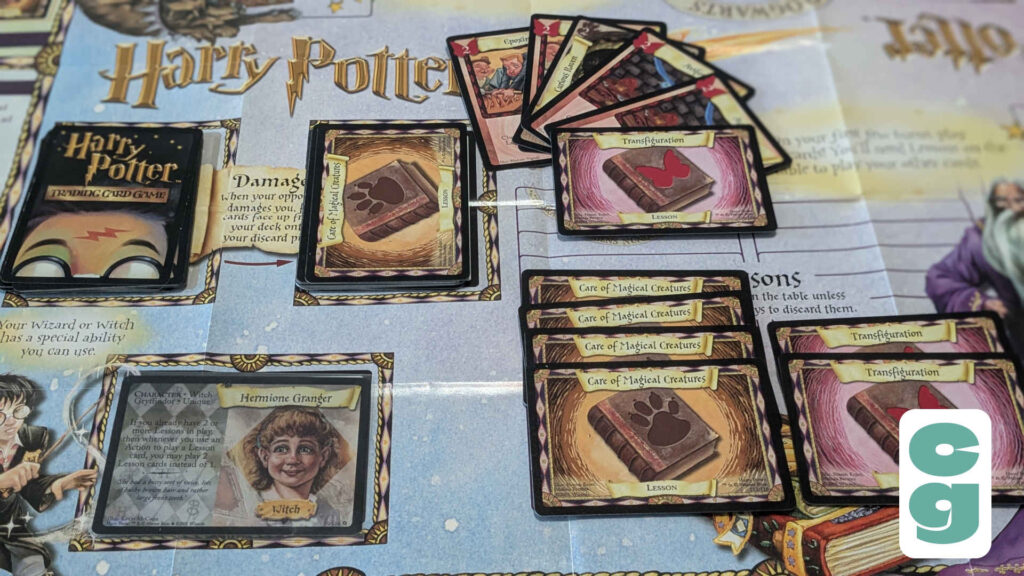
On each turn, you have 2 Actions; you can use these to perform any one Action; two different Actions once, or the same Action twice. Some cards take 2 Actions to use, so of course that would mean taking just that Action, once.
The turn order has three steps, and is as follows:
- Draw a card from your deck.
- Damage your opponent, or their Creatures, with the Creatures you have in play (as Creatures come into play in Step 3, they don’t deal damage until your next turn).
- Use 2 Actions; this can be playing a Lesson card, Creature card, Spell card Adventure, Item card, Character card, Location card or Match card.
Note that Adventure and Character cards don’t have a cost to play, so you won’t need specific Lessons in play to get these to the table. They both have a ‘cost’ of an extra Action, however, so playing one Adventure or one Character costs both of your Actions on a turn.
It’s also worth remembering that Location cards weren’t introduced until the Diagon Alley set was released, and the Match cards debuted as part of the Quidditch Cup set; neither of these will be referenced if you pick up a base Starter Set.
How To Win In The Harry Potter Trading Card Game
Securing victory in the Harry Potter Trading Card Game is straightforward enough; you win when your opponent’s draw deck runs out. If you have, for example, a Creature that deals 2 Damage each turn, then that will make your opponent discard two cards from their draw deck each turn. So winning is a case of dealing as much damage as possible, either with your creatures or via other means, before your opponent can do the same to you.
The Art Of The Harry Potter Trading Card Game
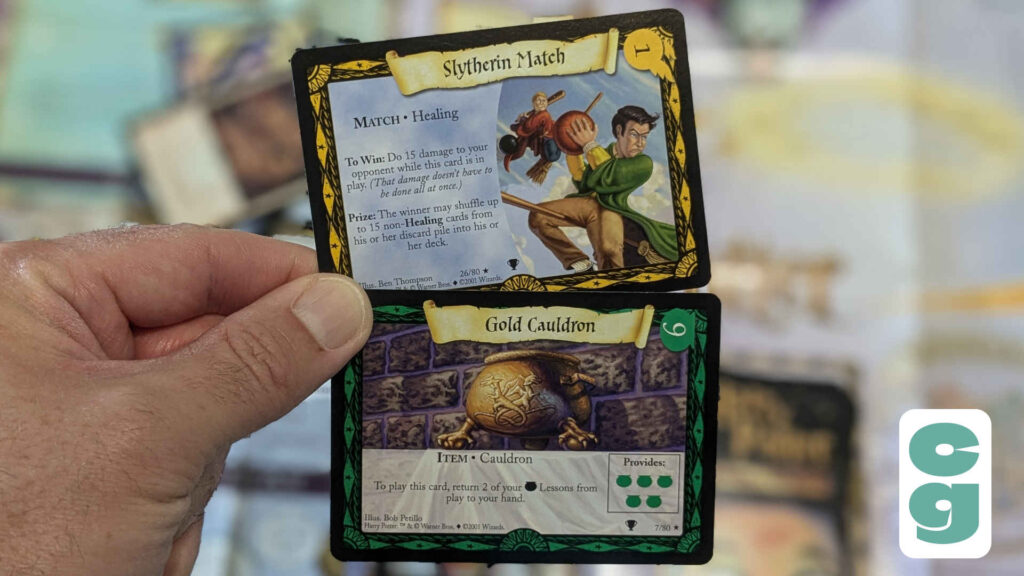
The card artwork, though it can sometimes be jarring in terms of the character designs, largely due to the film series and the live action portrayals of each character being what immediately comes to mind when you think of the saga’s cast, is consistently excellent; it feels a lot like the classic illustrations found in (and on the cover of) the original books, which is what connected readers to the Harry Potter universe before the movies. The art is based on the descriptions of characters from the books, rather than likenesses of actors, and it does a great job of doing so, while also having a slight feeling of caricature at times.
Of course, there’s lots of card art featuring characters, creatures and scenes that either didn’t make the cut when it comes to being adapted by the films, or aren’t so prominent that it’s all you’ll think about when you see the illustration; for every character that doesn’t look quite right in your mind (Hermione, for example), there’s a character such as Hufflepuff Witch, Hannah Abbott, whose appearance is more open to interpretation, both by the artist and the player.
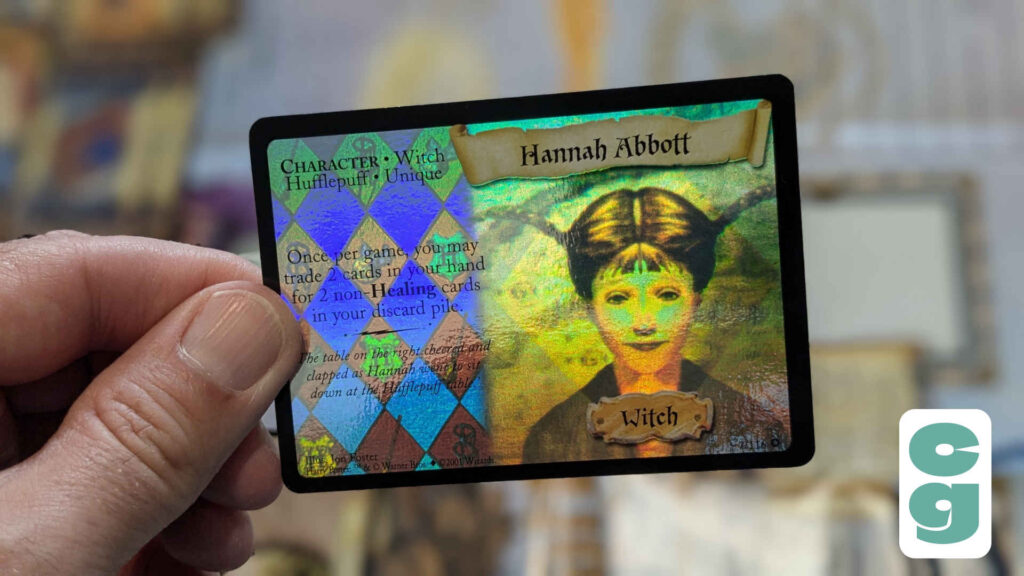
Speaking of Character cards, it’s possible to find 3D hologram versions of the Characters; these are absolutely gorgeous, featuring three dimensional renderings of the more traditional portraits on the standard Character cards. These are brilliantly thematic too, as the magical beings in the Harry Potter universe appear in paintings, cards, posters and photos as moving images (though of course, the Harry Potter TCG cards won’t speak back to you!).
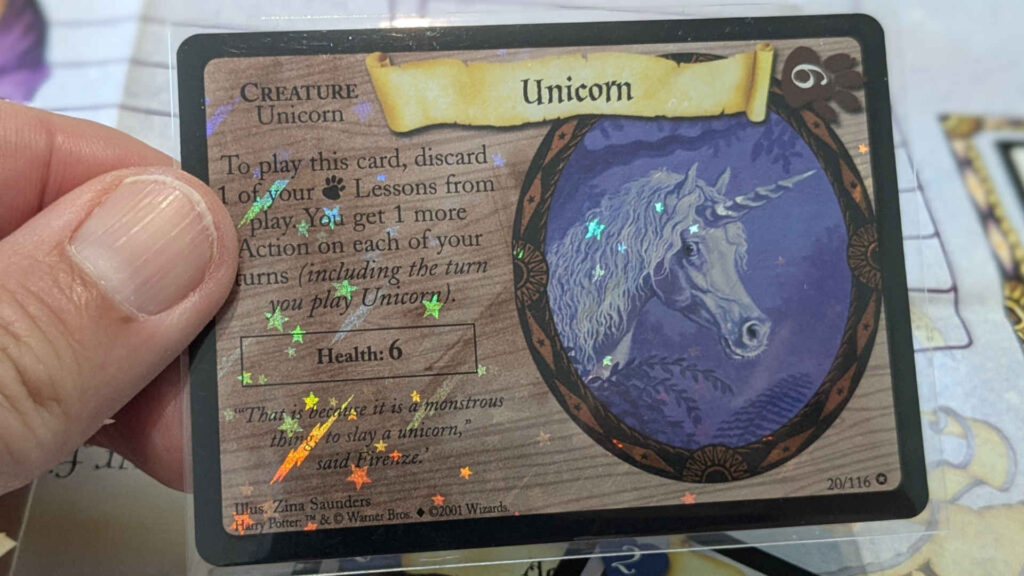
The rarer, foil treated versions of cards, as has already been mentioned, feature stunning star and lightning bolt patterns, making them really stand out. Despite their age, they don’t feel particularly ‘old’ in terms of their design; lavishly designed foil treatments of the type found on Harry Potter cards are still found on cards today, though perhaps all that’s missing on these cards are textured finishes, of the sort you’d find on the highest end Pokemon or Lorcana cards.
Beyond the illustrations, the overall look and feel of the cards very much evokes the aesthetic and general ambience of the Harry Potter saga, using scrolls, symbols and fancy fonts for card titles and other elements. It’s a gorgeous looking game, and it’s clear that Wizards of the Coast went all out in terms of recreating the ambience of the Harry Potter universe; it’s a gorgeous game, and it’s aged beautifully, with timeless illustrations and excellent clarity in terms of its card layouts.
A Closer Look At The Mechanics Of The Harry Potter Trading Card Game
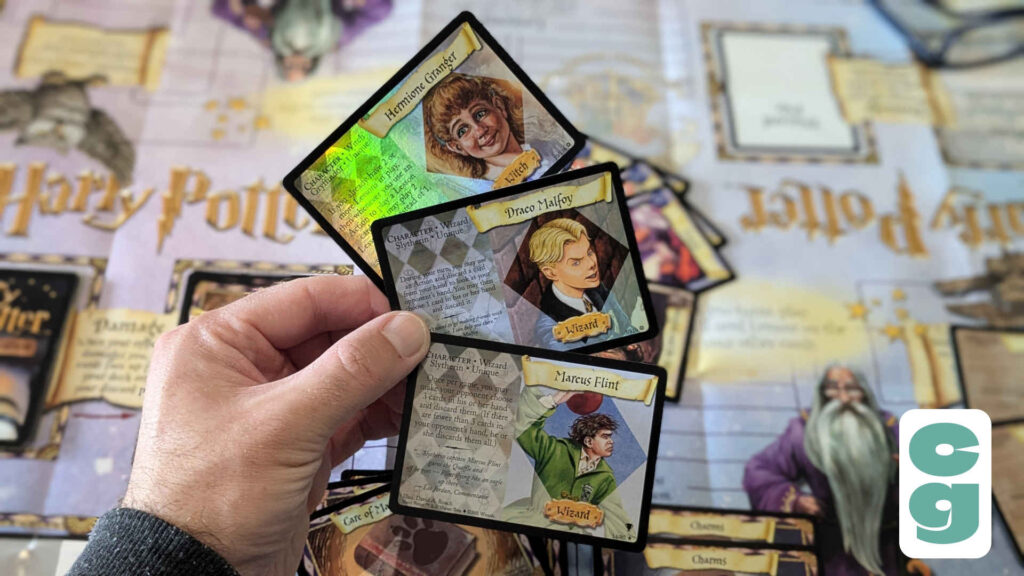
So beyond the art on Character cards, it’s worth noting that having a Character to focus your deck around is a really neat idea, and one that other games, such as UniVersus and, more recently, One Piece and Star Wars Unlimited, also have as a strong element of their own respective games. It means that you can focus your deckbuilding around the bonuses, speciality and even Hogwarts House that your Character belongs to.
Deckbuilding is easy, following the same (or at least similar) principles to most TCGs, in that you can only have up to four copies of each type of card, except for Lessons, for which there’s no card number limit. A principle it shares with, for example, Magic: The Gathering or Pokemon, is that you’ll need to ensure you have enough Lesson cards of the correct type to be able to use the other card types in your deck.
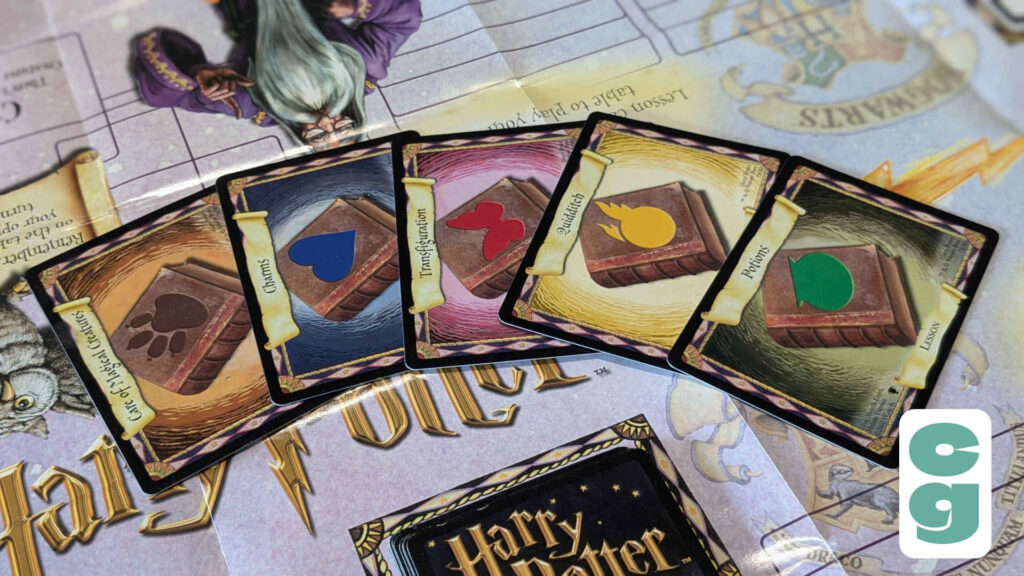
The Lessons themselves feel nicely thematic to the saga’s universe, with the types being Care of Magical Creatures (with a brown paw symbol), Charms (a blue heart), Potions (a green cauldron), Transfiguration (a red butterfly) and Quidditch (which was introduced in the Quidditch Cup expansion, and has a yellow trophy as its symbol).
Should the thought of building a Hogwarts House deck be of appeal, you can also include only cards that relate to a specific House, so for example, if you have Draco Malfoy as your Character, you could build yourself a Slytherin deck. Of course, as well as cards with the Slytherin, Gryffindor, Hufflepuff and Ravenclaw keywords, many aren’t House specific, so you could include those ‘neutral’ cards too. It’s worth noting that each of the cards bearing the House keywords feels thematic according to the traits of the Houses, too.
That thematic feel continues throughout the game’s various mechanics; it makes logical sense that, to play the different types of card, you’d need specific knowledge in it area to play it. Want to play a Transfiguration type Spell? Attend more Transfiguration Lessons to gain the knowledge to use it! Stronger Spells, Items, Creatures and so on will require more knowledge to use, hence their higher Lesson cost, with each Lesson providing 1 Power of the relevant Lesson type.
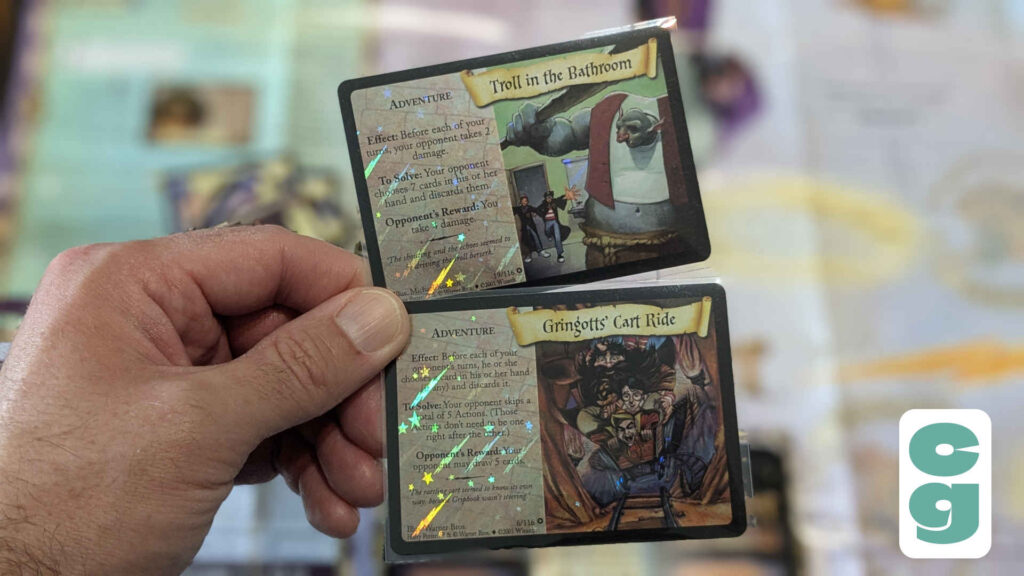
Adventures allow players to bring specific events from the storylines of the first few books into the game, with the powerful card type providing challenges, along with powerful rewards too. Quidditch Match cards (introduced in the Quidditch Cup set), as well as the extra Lesson type, bring those sporting events to the Trading Card Game, with players competing for a bonus as a reward for completing the requirements on a card. Locations, introduced in the Diagon Alley set, functioned as Stadiums do in Pokemon; that is to say that, when in play, they affect both players, and there can be only one in play at a time. If another Location is played the current Location is discarded.
The ‘two Actions per turn’ structure, along with fixed upkeep and damage phases, give the game a fast paced and streamlined feel, and it remains lean, focused and thematic throughout.
What Happened To The Harry Potter Trading Card Game?
If it’s so good, and if the game sold so well during its first few months after launch, why did it die so quickly?
It’s a genuine shame that the Harry Potter Trading Card Game was so short-lived, as many of the books, not to mention several important elements and characters that didn’t make their appearance in the series early on, aren’t covered. In fact, the last official set was The Chamber of Secrets, which covered the second book in the series; all four of the other, previously released sets (Base Set, Quidditch Cup, Diagon Alley and Adventures at Hogwarts) were based around the first book (Harry Potter and the Sorcerer’s Stone for US readers; Harry Potter and the Philosopher’s Stone elsewhere).
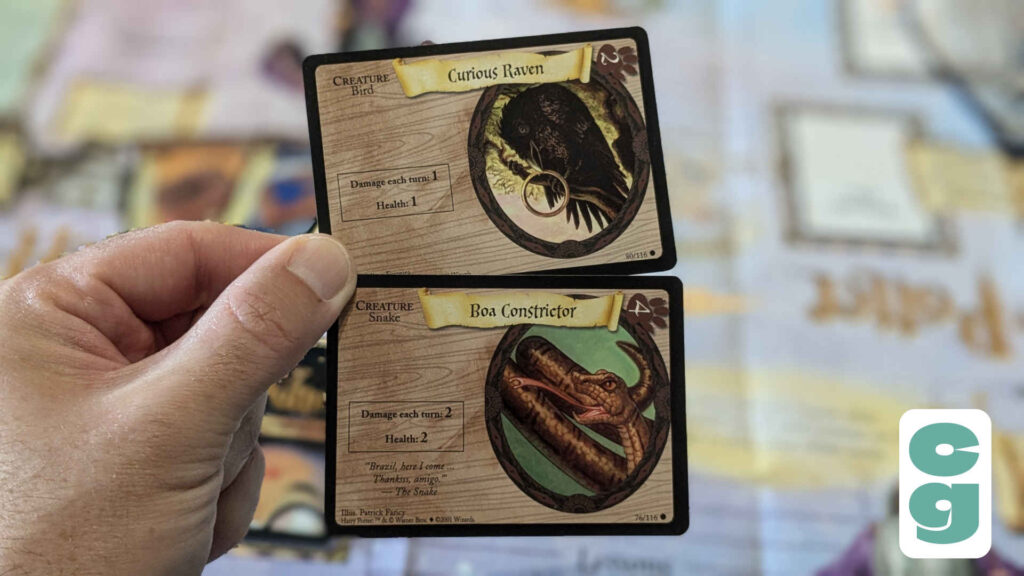
Though the first set sold well, and subsequent sets were also successful, or at least so it seemed, Wizards of the Coast decided to cease production of the game and end all official support, with gaming leagues and a tournament scene having sprung up in the short time the game was available. It’s not known why Wizards of the Coast stopped producing the Harry Potter Trading Card Game, as no official statement was ever made about it, but it still feels like an odd and ill-thought out decision from the outside. Harry Potter was huge in 2003, when the game officially ended.
With the first two films having released in 2001 and 2002 to enormous commercial success, and the third (arguably the best; it’s certainly my own personal favourite of the series), Harry Potter and the Prisoner of Azkaban) due in mid-2004, the game was perfectly positioned to pick up fans on the back of huge hype for the films, and it would have had lots more material to draw from too.
Could a legal matter have had anything to do with the game’s untimely end? In 2002, a lawsuit filed by publishers Wizards of the Coast, against Charles Federline (the company’s former Vice President of Operations), alleged that he cost the company over $93,000, by undermining the bidding process for the printing work of the cards. Though little information can be found about this case or its outcome, and this is only speculation, it’s hard to shake the feeling that this cost, as well as the subsequent court case, may well have been a significant factor in the Harry Potter Trading Card Game’s demise.
Does The Harry Potter Trading Card Game Still Have An Active Community?
Despite the game’s official end happening so abruptly, over two decades ago, perhaps surprisingly the answer to that question is: yes. There’s still a relatively active community for the game. Revival events still take place, and there are fan made expansion sets, such as The Prisoner of Azkaban Goblet of Fire, Heir of Slytherin and many more, that can be found online; check out harrypottertcg.com for further details.
Our Verdict On The Harry Potter Trading Card Game
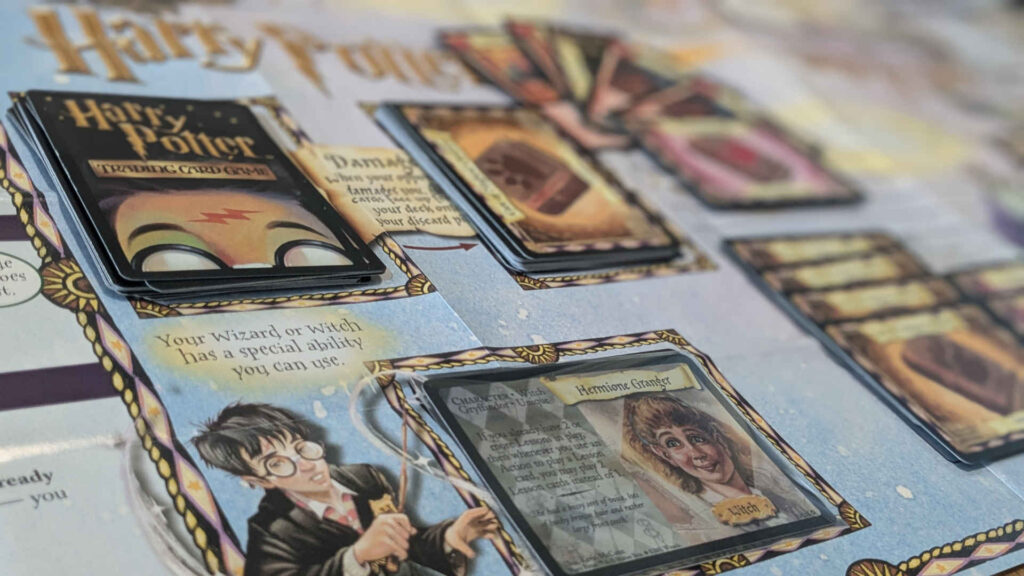
Wizards of the Coast really did an excellent job of adapting the Harry Potter books as a TCG; though there’s a sense that it’s Magic: The Gathering-lite, with Lessons being akin to Land, and other card types undoubtedly likely to feel familiar (there’s even a form of summoning sickness when playing Creatures), the addition of Characters and Adventures made the Harry Potter Trading Card Game feel much less like a battle for the fate of the multiverse, and more of a duel between two trainee wizards. Which, of course, means that the aptly named Wizards of the Coast really knocked it out of the park with this game.
It’s easy to pick up and play, but offers enough strategic depth in its deckbuilding possibilities, particularly once additions from the Quidditch Cup and Diagon Alley expansions are brought into the mix, that more experienced players won’t be bored by the focus on simplicity and streamlined mechanics.
Though sealed Harry Potter decks and booster packs can be really expensive, having spent years being incredibly cheap and then jumping significantly during COVID lockdown and beyond, buying individual card, bundles or opened decks is pretty cheap, and it’s well worth buying a Starter Set and a few bundles of cards to have a pool of cards to play with, as well as to experiment with deckbuilding.
Fans have also kept the game alive, in a sense, with unofficial sets that bring more of the materials from the book series into the game; Revival events also keep the magic going, even after all these years.
In short, the Harry Potter Trading Card Game is a fun, fast paced game of duelling witches and wizards, with lovely card art, and it should appeal even to TCG players who aren’t necessarily fans of the Harry Potter series.
